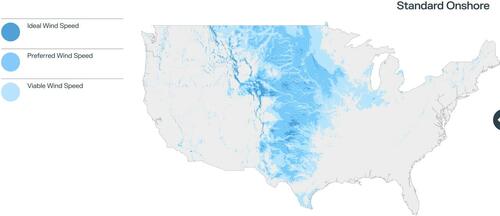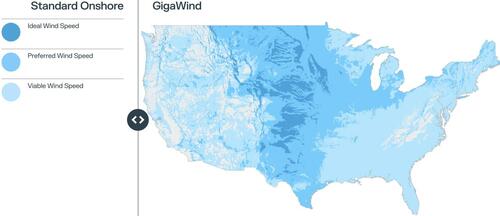
Meet the WindRunner. At a jaw-dropping 365 feet long and 79 feet tall, it's a cargo plane unlike anything the world has seen before -- stretching 80 feet longer than the current champ, the Russian Antonov An-124. Also unlike other massive planes, this one is built to carry just one specific kind of cargo: The world's largest wind turbine blades, which could be longer than a football field in coming years.

Don't look for the WindRunner in the sky just yet. For now, it's merely a design, albeit one that's already seven years in the making.
As first reported Wednesday by the Wall Street Journal, the plane is the brainchild of MIT-educated aerospace engineer Mark Lundstrom, whose Boulder-headquartered startup, Radia, will need a few more years of design work and certification. If the plane comes to life, it could fundamentally change the economics of wind energy.
Bigger blades are far more efficient than smaller ones, as they can capture more wind and are positioned higher, where winds blow more constantly. However, the size of onshore wind turbines are currently limited by the transportation limits imposed by ground infrastructure. Specifically, to turn corners and fit under highway overpasses, blades for onshore turbines can't exceed 230 feet, according to Radia.
That means that, today, the largest blades can only be employed in offshore wind farms. There, however, the high cost of building towers in the ocean is prompting many utilities to sour on the concept. The bad financials on sea and land have contributed to a wave of both offshore and onshore project cancellations, slashing a planned 8.5 gigawatts of wind power.
"Radia estimates the larger turbines could reduce the cost of energy by up to 35% and increase the consistency of power generation by 20% compared with today’s onshore turbines." -- WSJ
Avoiding public highways and roads altogether will require that each onshore project is outfitted with a custom-made, 6,000-foot, packed-dirt runway for WindRunner to land on.
The larger blades will render far more of United States viable for potential wind projects, as depicted in these Radia graphics that compare standard onshore wind energy to "Gigawind" employing the much longer blades and far larger turbines:
However, the scale of the envisioned giant turbines is certain to cause an uproar among people who live near proposed wind farms: The Journal describes them as "roughly as tall as the U.S. Capitol with the Washington Monument stacked on top."
You can read the Wall Street Journal's full report here.
Meet the WindRunner. At a jaw-dropping 365 feet long and 79 feet tall, it’s a cargo plane unlike anything the world has seen before — stretching 80 feet longer than the current champ, the Russian Antonov An-124. Also unlike other massive planes, this one is built to carry just one specific kind of cargo: The world’s largest wind turbine blades, which could be longer than a football field in coming years.

Don’t look for the WindRunner in the sky just yet. For now, it’s merely a design, albeit one that’s already seven years in the making.
As first reported Wednesday by the Wall Street Journal, the plane is the brainchild of MIT-educated aerospace engineer Mark Lundstrom, whose Boulder-headquartered startup, Radia, will need a few more years of design work and certification. If the plane comes to life, it could fundamentally change the economics of wind energy.
Bigger blades are far more efficient than smaller ones, as they can capture more wind and are positioned higher, where winds blow more constantly. However, the size of onshore wind turbines are currently limited by the transportation limits imposed by ground infrastructure. Specifically, to turn corners and fit under highway overpasses, blades for onshore turbines can’t exceed 230 feet, according to Radia.
That means that, today, the largest blades can only be employed in offshore wind farms. There, however, the high cost of building towers in the ocean is prompting many utilities to sour on the concept. The bad financials on sea and land have contributed to a wave of both offshore and onshore project cancellations, slashing a planned 8.5 gigawatts of wind power.
“Radia estimates the larger turbines could reduce the cost of energy by up to 35% and increase the consistency of power generation by 20% compared with today’s onshore turbines.” — WSJ
Avoiding public highways and roads altogether will require that each onshore project is outfitted with a custom-made, 6,000-foot, packed-dirt runway for WindRunner to land on.
The larger blades will render far more of United States viable for potential wind projects, as depicted in these Radia graphics that compare standard onshore wind energy to “Gigawind” employing the much longer blades and far larger turbines:
However, the scale of the envisioned giant turbines is certain to cause an uproar among people who live near proposed wind farms: The Journal describes them as “roughly as tall as the U.S. Capitol with the Washington Monument stacked on top.”
You can read the Wall Street Journal’s full report here.
Loading…









